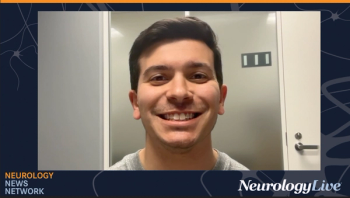
NeuroVoices: Pam Conley and Alan Glicklich, MD, on NVG-2089’s Potential to Treat CIDP
Members from Nuvig Therapeutics discussed the rationale and therapeutic development of NVG-2089, a novel anti-inflammatory agent being studied for chronic inflammatory demyelinating polyneuropathy.
Chronic inflammatory demyelinating polyneuropathy (CIDP) is a rare, acquired immune-mediated neuropathy that affects the peripheral nerves. With an incidence of around 1 to 8 per 100,000 people, it is considered the chronic counterpart to Guillain-Barré syndrome (GBS), but with a slower onset and progressive course.
Earlier this year, at the
Findings from the study revealed that NVG-2089 was well tolerated, with no serious adverse events observed, and a half-life spanning 11-12 days. In an interview with NeurologyLive®, Pamela Conley, chief scientific officer and interim chief executive at Nuvig, and Alan Glicklich, MD, chief medical officer, sat down to discuss the promise of this emerging therapeutic. The duo gave insights on the mechanism behind this agent, how it differs from standard of care treatments, and some of the notable findings from the phase 1 study. In addition, Conley and Glicklich outline the ongoing phase 2 INVGOR trial in CIDP, which aims to improve patient experience through a more ethical and tolerable design.
NeurologyLive: For our clinical audience, can you give a little background on NVG-2089—its mechanism and rationale behind the molecule?
Pamela Conley: NVG-2089 is a recombinant human IgG1 Fc fragment. It's designed to recapitulate the anti-inflammatory activity of the sialylated component of IVIG at a 10- to 20-fold lower dose. As you know, IVIG is the standard of care in CIDP, but it's often a difficult therapy to tolerate on a chronic basis due to the large volume and high dose of protein required. That means long infusion times—sometimes one to two days.
With NVG-2089, we believe we can deliver the equivalent of high-dose IVIG, but in a much lower volume and with about a one-hour infusion time. Regarding the mechanism of action, our compound binds to type II Fc receptors, triggering a cascade of anti-inflammatory activities downstream. Unlike FcRn inhibitors—which broadly reduce IgG levels—or complement inhibitors, which target a single pathway, NVG-2089 modulates several key immune mechanisms. It affects B cells, myeloid cells, and T regulatory cells, offering a broader and more balanced approach. And importantly, it's not immunosuppressive—it doesn't eliminate B cells or completely inhibit T cells. We believe this gives us a very differentiated profile in the CIDP treatment landscape.
How was the phase 1 study conducted, and what were the major findings?
Alan Glicklich, MD: Our phase 1 study used a single ascending dose and multiple ascending dose format in healthy volunteers. In the single ascending dose portion, we studied five different dosages of NVG-2089, all the way up to 500 mg/kg—which is much higher than we expect to use in actual clinical trials in patients. In the multiple ascending dose portion, we went up to 300 mg/kg, again higher than we anticipate for real-world use.
We saw an excellent tolerability and safety profile across the board. There were no serious adverse events, no severe adverse events, and no discontinuations due to adverse events. From a safety and tolerability standpoint, we were very encouraged. The pharmacokinetics also showed a long half-life, allowing for dosing every two to possibly every three to four weeks.
Can you outline the INVGOR Phase 2 trial and what stands out about its design?
Alan Glicklich, MD: The INVGOR trial is being conducted in CIDP patients, both treatment-experienced patients who’ve been on IVIG, and treatment-naive patients. We've taken a lot of lessons from previous CIDP trials. Many earlier studies had designs that were less patient-friendly—they required patients to wash out of their existing treatment, then get worse, and only then receive an experimental drug. Plus, there was often a placebo group, meaning after stopping your standard of care and potentially worsening, you’d have a 50-50 chance of being put on placebo. We spoke to KOLs, patient groups, and investigators, and the message was clear: no one likes this kind of design.
So, we've created what we think is a much more patient-friendly approach. All patients get active treatment. Treatment-experienced patients transition directly—or after a three-week window, depending on their last IVIG dose—to NVG-2089. The idea is to keep patients on effective therapy while collecting robust data on efficacy. For treatment-naive patients, we’ll be looking at improvement, and for treatment-experienced ones, we’ll assess stability or continued improvement. We believe this approach is more ethical, more attractive to patients, and still scientifically rigorous.
Do you have any timelines for the study or anticipated readouts?
Alan Glicklich, MD: Yes, the study is currently enrolling at sites across the U.S., Canada, Europe, Asia, and Australia—so it has a broad geographic footprint. We anticipate having data to share sometime next year from this trial.
Talk a little about how the CIDP treatment landscape is evolving. There's been quite a bit of drug development in recent years.
Pamela Conley: I’ll start with the high-level view, and then Alan can comment on how we think our drug compares to other mechanisms like FcRn inhibition.
As we said earlier, IVIG is still the standard of care, but being a plasma-derived product, it comes with challenges—limited supply, long infusion times, tolerability concerns. If our drug can replicate IVIG’s efficacy at a 10- to 20-fold lower dose, that would be a major advancement for patients. We also believe the safety profile will be strong, and again, without being immunosuppressive.
Alan Glicklich, MD: Yes, and when you compare IVIG to some of the newer agents—cross-trial comparisons are imperfect, of course, but still useful—you see some interesting differences. For example, in the ProCID study of IVIG, 80% to 92% of patients responded, depending on the dose. In contrast, in the ADHERE study of efgartigimod (an FcRn inhibitor), around two-thirds responded in the open-label portion.
More notably, only 58% of patients who had previously been treated with IVIG responded to efgartigimod. And in the placebo-controlled part of ADHERE, fewer than half of patients on active treatment maintained response by the end of the year. The treatment effect over placebo was about 18%, which is lower than the delta seen with IVIG.
So, we think that if our drug delivers IVIG-like efficacy, with a pleiotropic mechanism and better tolerability, we could be best-in-class. Obviously, the trial will tell us whether that's true.
The efficacy data from complement inhibitors looks promising so far, but safety remains a concern. For instance, with relucirumab in a relatively small Phase 2 study, there was a case of encapsulated organism infection—one of the known risks with complement blockade.
All of these agents—ours included—will need more data, but we think our non-immunosuppressive, broad-acting mechanism, shorter infusion time, and good tolerability give us the potential to stand out. And it’s ultimately good for patients to have options. This is a serious, chronic disease, and there should be a range of tools available to treat it.
Transcript edited for clarity.
Newsletter
Keep your finger on the pulse of neurology—subscribe to NeurologyLive for expert interviews, new data, and breakthrough treatment updates.































